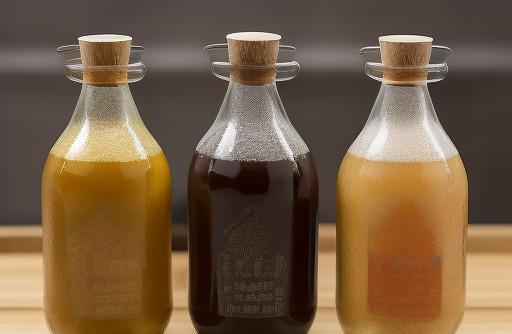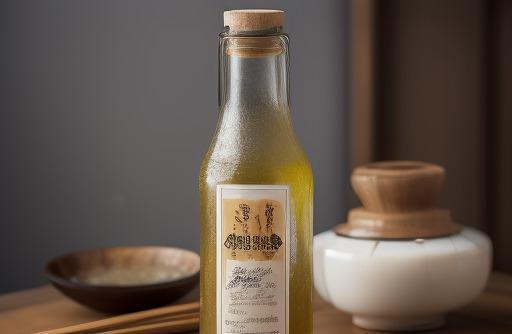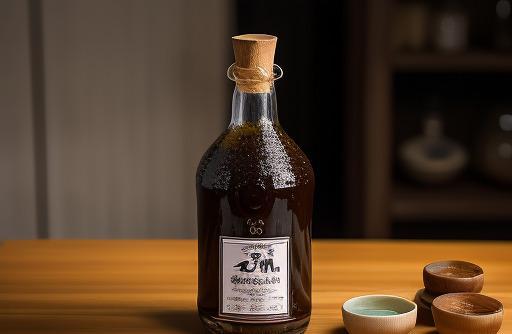- You are here:
- Home »
- Food Substitutes
- » Best Substitutes For Mirin
Best Substitutes For Mirin

Mirin is a sweet rice wine widely used in Japanese cuisine to add a unique flavor profile to dishes. Its complex sweetness and subtle acidity make it a key ingredient in many traditional Japanese recipes. However, if you find yourself without mirin in your pantry or you’re looking for an alternative due to dietary restrictions or personal preference, there are several excellent substitutes available. In this article, we will explore the best substitutes for mirin that will allow you to achieve similar flavors and results in your cooking.
Key Takeaways
- Mirin is a sweet rice wine commonly used in Japanese cuisine.
- Substitutes for mirin offer a similar sweet flavor profile and acidity.
- The best substitutes for mirin include sake, sweet white wine, rice vinegar, and honey.
- Choose a substitute based on its compatibility with the dish and your personal taste preferences.
- Cooking with substitutes for mirin may require adjustments to maintain the desired balance of flavors.
Why You Need A Substitute For Mirin
There are several reasons why you might need a substitute for mirin. Perhaps you don’t have mirin in your pantry, or it’s challenging to find in your local stores. Additionally, some people may avoid mirin due to dietary restrictions, including those following a gluten-free or alcohol-free diet. In such cases, finding a suitable alternative allows you to enjoy delicious Japanese-inspired dishes without compromising on flavor.
Types Of Substitutes For Mirin

When seeking a substitute for mirin, it’s essential to consider the flavor profile and characteristics you’re trying to replace. Different alternatives offer varying levels of sweetness, acidity, and complexity. Here are some common types of substitutes for mirin:
-
Sake: Sake is a Japanese rice wine that shares similar characteristics with mirin. It is less sweet but provides a delicate umami flavor. Sake is an excellent substitute when you want to retain the umami essence in your dish without overpowering it with sweetness.
-
Sweet White Wine: Sweet white wine, such as sweet Riesling or Moscato, can be a suitable substitute for mirin. These wines offer a balance of sweetness and acidity, providing a complex flavor profile similar to mirin. Be sure to choose a sweet white wine rather than a dry variety to maintain the desired level of sweetness.
-
Rice Vinegar: Rice vinegar is made from fermented rice and has a milder flavor compared to other vinegars. While it lacks the sweetness of mirin, rice vinegar’s subtle acidity can help enhance the taste of dishes. When using rice vinegar as a substitute for mirin, make sure to add a small amount of sugar or sweetener to compensate for the sweetness.
-
Honey: Honey can serve as a substitute for mirin, particularly in marinades or sauces. While it doesn’t offer the same flavor complexity as mirin, honey adds a natural sweetness to dishes. It’s important to note that honey has a distinct flavor, so it may alter the overall taste of your dish. Use it sparingly and adjust other seasonings accordingly.
Best Substitutes For Mirin

When it comes to finding the best substitute for mirin, it ultimately depends on the specific dish you’re making and your personal taste preferences. Below are some of the top substitutes for mirin that are known for their ability to mimic and enhance the flavors found in Japanese cuisine:
-
Sake: To replace mirin with sake, use a one-to-one ratio. Sake offers a similar umami flavor without the same level of sweetness, so adjust any additional sugar or sweetener accordingly. Keep in mind that if the dish calls for a significant amount of mirin, you may need to compensate for the reduced sweetness by adding some sugar or a sweetener of choice.
-
Sweet White Wine: Replace mirin with sweet white wine using a one-to-one ratio. This substitution maintains the sweet and acidic characteristics of mirin, providing a pleasant flavor profile in your dishes. Consider choosing a sweet white wine that complements the flavors of your recipe.
-
Rice Vinegar: When substituting mirin with rice vinegar, use a combination of one part rice vinegar to one part sugar or sweetener. This will help maintain the balance of sweetness in your dish. Rice vinegar brings a tangy acidity, so make sure to adjust other seasonings to achieve the desired balance.
-
Honey: To use honey as a substitute for mirin, dissolve one tablespoon of honey in two tablespoons of water and mix well. This mixture can replace two tablespoons of mirin in your recipe. Remember that honey is sweeter than mirin, so you may need to reduce other sweet components in your dish and adjust to taste.
Choosing The Right Substitute For Mirin

When choosing a substitute for mirin, consider the flavor profile of the dish you’re preparing and your personal preferences. Some key factors to consider include the desired level of sweetness, acidity, and overall complexity. Here are a few tips to help you make an informed decision:
-
For savory dishes: If you’re cooking a savory dish where umami flavors are crucial, consider using sake as a substitute for mirin. Sake offers a delicate umami taste that complements dishes such as teriyaki and stir-fries.
-
For sweet and savory dishes: When preparing dishes that require a balance of sweetness and acidity, such as glazes, marinades, or sauces, sweet white wine can be an excellent substitute for mirin. Its natural sweetness and acidity will enhance the flavors without overwhelming the dish.
-
For tangy and acidic dishes: Rice vinegar works well as a substitute in recipes that rely on the tangy and acidic notes of mirin. Use a combination of rice vinegar and sweetener to maintain the desired balance.
-
For honey lovers: If you enjoy the distinct flavor of honey, it can be used as a substitute for mirin in marinades or sauces. However, be cautious with the amount used as honey’s sweetness can overpower other flavors.
By selecting the most suitable substitute for mirin based on your dish and personal preferences, you can achieve a similar flavor profile and enhance your culinary creations.
Pro Tip: When using a substitute for mirin, start with a smaller amount and taste as you go. You can always add more, but it’s challenging to reduce the intensity if you’ve added too much. Adjust the other flavors and seasonings in your dish accordingly.
Cooking With Substitutes For Mirin

Cooking with substitutes for mirin requires some adjustments to maintain the desired balance of flavors in your dishes. Here are a few tips to help you navigate the process:
-
Reduce the amount: Depending on the substitute used, you may need to reduce the quantity compared to the original mirin measurement mentioned in the recipe. This is especially true when using sweet white wine or honey as they tend to be sweeter and stronger in flavor than mirin. Starting with a smaller amount and adjusting to taste is often the best approach.
-
Adjust sweetness: If using a substitute that is less sweet than mirin, such as sake or rice vinegar, you may need to add a small amount of sugar or sweetener to maintain the intended sweetness. Conversely, if you’re using a substitute that is sweeter than mirin, like honey, consider reducing other sweet components of the recipe.
-
Consider acidity: The acidity of mirin contributes to the overall flavor of the dish. If your substitute lacks the necessary acidity, adjust by adding a small amount of rice vinegar or lemon juice to achieve the desired balance. Remember to taste and adjust gradually to avoid overpowering the other flavors.
-
Experiment and taste: Cooking is an art, so don’t be afraid to experiment! Taste your dish as you cook with the substitute for mirin and make adjustments according to your preferences. Recording the quantities and adjustments you make will help you refine your recipes for future use.
Recipes Using Substitutes For Mirin

Here are two delicious recipes that can be made using substitutes for mirin:
1. Teriyaki Sauce
Ingredients:
- 1/4 cup soy sauce
- 1/4 cup sweet white wine (substitute for mirin)
- 2 tablespoons brown sugar
- 1 tablespoon rice vinegar
- 1 garlic clove, minced
- 1 teaspoon grated fresh ginger
Instructions:
- In a small saucepan, combine the soy sauce, sweet white wine, brown sugar, rice vinegar, minced garlic, and grated ginger.
- Bring the mixture to a gentle boil over medium heat, stirring occasionally to dissolve the sugar.
- Reduce the heat to low and simmer for 5-7 minutes, or until the sauce has thickened slightly.
- Remove from heat and allow the teriyaki sauce to cool before using it as a marinade or glaze for grilled meats or vegetables.
2. Vegetable Stir-Fry
Ingredients:
- 1 tablespoon vegetable oil
- 1/4 cup sake (substitute for mirin)
- 2 tablespoons soy sauce
- 1 tablespoon honey
- 1 teaspoon rice vinegar
- Assorted vegetables (e.g., bell peppers, broccoli, carrots, snap peas)
Instructions:
- Heat the vegetable oil in a large skillet or wok over medium-high heat.
- Add the vegetables to the skillet and stir-fry them for 3-5 minutes until they are crisp-tender.
- While the vegetables cook, mix together the sake, soy sauce, honey, and rice vinegar in a small bowl.
- Pour the sauce mixture over the vegetables in the skillet and stir-fry for an additional 1-2 minutes until the sauce has thickened slightly.
- Remove from heat and serve the vegetable stir-fry as a side dish or over steamed rice or noodles.
Feel free to adjust the seasoning and the amount of each substitute to suit your taste preferences and the flavor profile you desire.
Storage And Shelf Life Of Substitutes

When using substitutes for mirin, it’s essential to consider their storage and shelf life to maintain their quality and flavor. Here are some guidelines for storing the common substitutes for mirin:
-
Sake: Sake should be stored in a cool, dark place, away from direct sunlight and heat sources. Once opened, it can be kept in the refrigerator for a few months. However, for the best quality and taste, it’s recommended to consume sake within a few weeks of opening.
-
Sweet White Wine: Sweet white wine should be refrigerated after opening to preserve its freshness. The shelf life depends on the specific wine, but generally, it can be stored for up to 1-2 weeks in the refrigerator. Remember to tightly seal the bottle to prevent oxidation.
-
Rice Vinegar: Rice vinegar can be stored at room temperature in a cool, dark place. Once opened, it will last for several months if properly sealed. For longer shelf life, you can refrigerate rice vinegar, although it’s not necessary. Always check the expiration date and discard if it has gone bad.
-
Honey: Honey has an exceptionally long shelf life if stored properly. It should be kept in a tightly sealed container at room temperature, away from heat and direct sunlight. Honey may crystallize over time, but it is still safe to consume. To restore its smooth texture, gently heat the honey in a warm water bath or microwave.
Remember to check the storage guidelines provided on the packaging and use your judgment to ensure the substitutes for mirin are fresh and suitable for use in your recipes.
Conclusion
Finding the best substitute for mirin allows you to maintain the distinct flavors of Japanese cuisine without needing to rely solely on this specific ingredient. Whether you opt for sake, sweet white wine, rice vinegar, or honey, each substitute brings its own unique taste to dishes. Consider the dish you’re preparing, the desired balance of sweetness and acidity, and your personal taste preferences when choosing a substitute. Remember to taste and adjust as you cook to achieve the ideal flavor profile. With the right substitute for mirin, you can explore the rich flavors of Japanese cuisine while catering to dietary restrictions or personal preferences.
So go ahead, embrace the versatility of these substitutes, and elevate your dishes by adding a touch of sweetness and acidity without compromising on taste!
FAQS
What Is Mirin?
Mirin is a type of Japanese rice wine that is widely used in Japanese cuisine, particularly in teriyaki sauce, soups, and marinades. It has a sweet taste and is commonly used to balance out sour or salty flavors in Japanese cooking.
What Are Some Common Substitutes For Mirin?
Some common substitutes for mirin include dry sherry, sweet white wine, rice vinegar with a pinch of sugar, apple cider vinegar with a pinch of sugar, and white grape juice. These substitutes may not have the exact same flavor as mirin, but they can still add the necessary sweetness and acidity to a dish.
Can I Use Regular Wine As A Substitute For Mirin?
While regular wine can be used as a substitute for mirin in a pinch, it is not the best option because it is not as sweet and can overpower the other flavors in a dish. If you do use wine, it’s best to choose a sweet white wine, such as Riesling or Gewürztraminer.
Can I Use Honey Or Maple Syrup As A Substitute For Mirin?
While honey and maple syrup can add sweetness to a dish, they are not good substitutes for mirin because they do not have the acid content that mirin has. Using honey or maple syrup in place of mirin can make a dish too sweet and throw off the balance of flavors.
Can I Just Omit Mirin From A Recipe If I Don’t Have A Substitute?
If a recipe calls for mirin and you don’t have a suitable substitute, it’s best to omit it altogether rather than using an inappropriate ingredient. You can try adding a pinch of sugar and rice vinegar or lemon juice to the dish to balance out the flavors. For the best results, however, it’s recommended to use a suitable substitute if possible.
Sources
About the Author Jenny
I'm Jenny, a housewife with an unwavering passion for food. My culinary journey began with my grandmother's kitchen, and it's now a full-fledged food blog. I've turned my love for cooking into a creative outlet, sharing recipes and stories with a global community of fellow food enthusiasts. It's proof that being a housewife can also mean pursuing your passions and savoring life's delectable moments.
